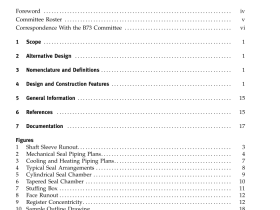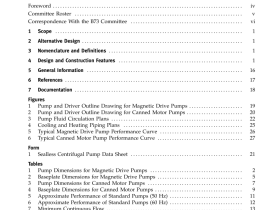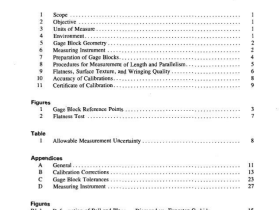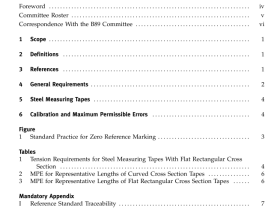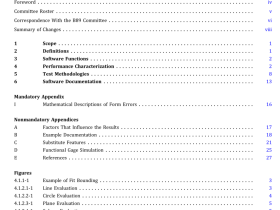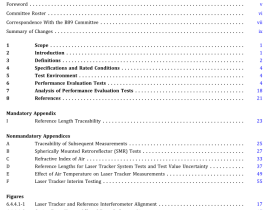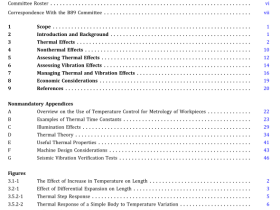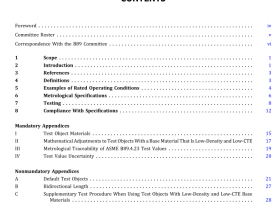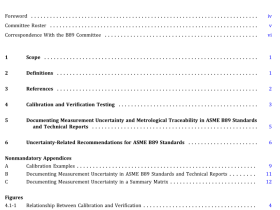ASME HRT-1 pdf download
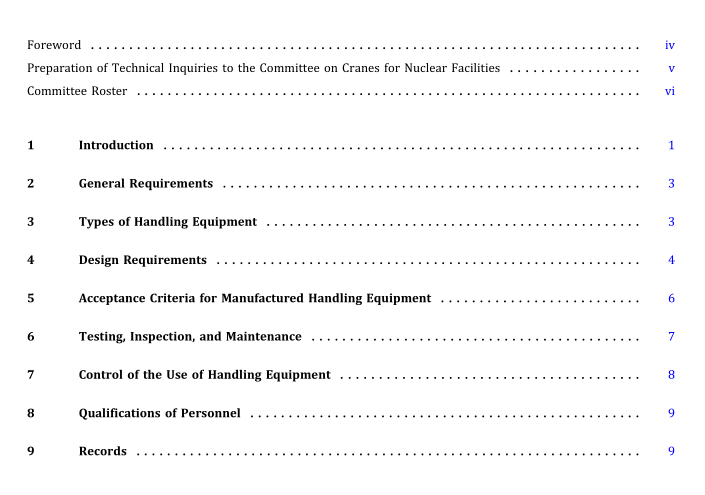
ASME HRT-1 pdf download Rules for Hoisting, Rigging, and Transporting Equipment for Nuclear Facilities
1 INTRODUCTION
1.1 General Hoisting, rigging, and transporting equipment covered inthis Standardshall beinaccordance withthe Standard’s requirements but not necessarily with its recommenda- tions.Theword“shall”isusedtodenotearequirement,the word “should” is used to denote a recommendation, and the word “may” is used to denote permission, which is neither a requirement nor a recommendation.
1.2 Scope ThisStandardprovidesrequirementsforthedesignand use ofhoisting, rigging, and transporting equipment used in the delivery ofnuclear facility components to a nuclear facility’s point ofreceipt and the handling ofsuch compo- nents until the start of the facility’s operating phase, defined as the point ofinitial fuel load. The requirements ofthisStandardarealsoapplicabletothedesignanduseof hoisting, rigging, and transporting equipment for modifi- cations at operating nuclear facilities when such equip- ment is not already controlled by existing facility procedures (e.g., procedures for controlling heavy loads or implementing maintenance rules).
1.3 Responsibility The owner shall determine the applicability of this Standard to special handling of a specific application, piece of equipment, or load. Special handling may be neededdueto highcostoftheload,componentsafetyclas- sification, safety program, or other project-critical requirements as determined bythe owner ordesign orga- nization. The equipment and load-handling activities covered by this Standard are dependent upon location and usage of the load-handling equipment at the facility. The owner is responsible for determining and specifying the type of load-handling equipment and the service conditions, performance, and degree ofquality assurance required. The extent to which this Standard is used at other than nuclear facilities shall be the responsibility of those referencing this Standard.
1.4 Definitions
The following definitions are provided to ensure a uniform understanding of terms as they are used in this Standard.
accepted industry standard: a standard established by a group representing individual members from various facets of an industry who normally are those engaged in design and manufacture. This type of standard is accepted by the responsible organization. Examples include AISC 303, ANSI/AGMA 2001-C95, and CMAA Specification No. 70 (see para. 1.5).
consensus standard: a standard established by a group representing a cross section of a particular industry or trade, or a part thereof. A cross section includes those who purchase or use a product of the industry or trade, as well as those who produce these products. Examples ofconsensus standards include ASME B30 stan- dards, ASME NOG-1, and ASME NUM-1 (see para. 1.5).
